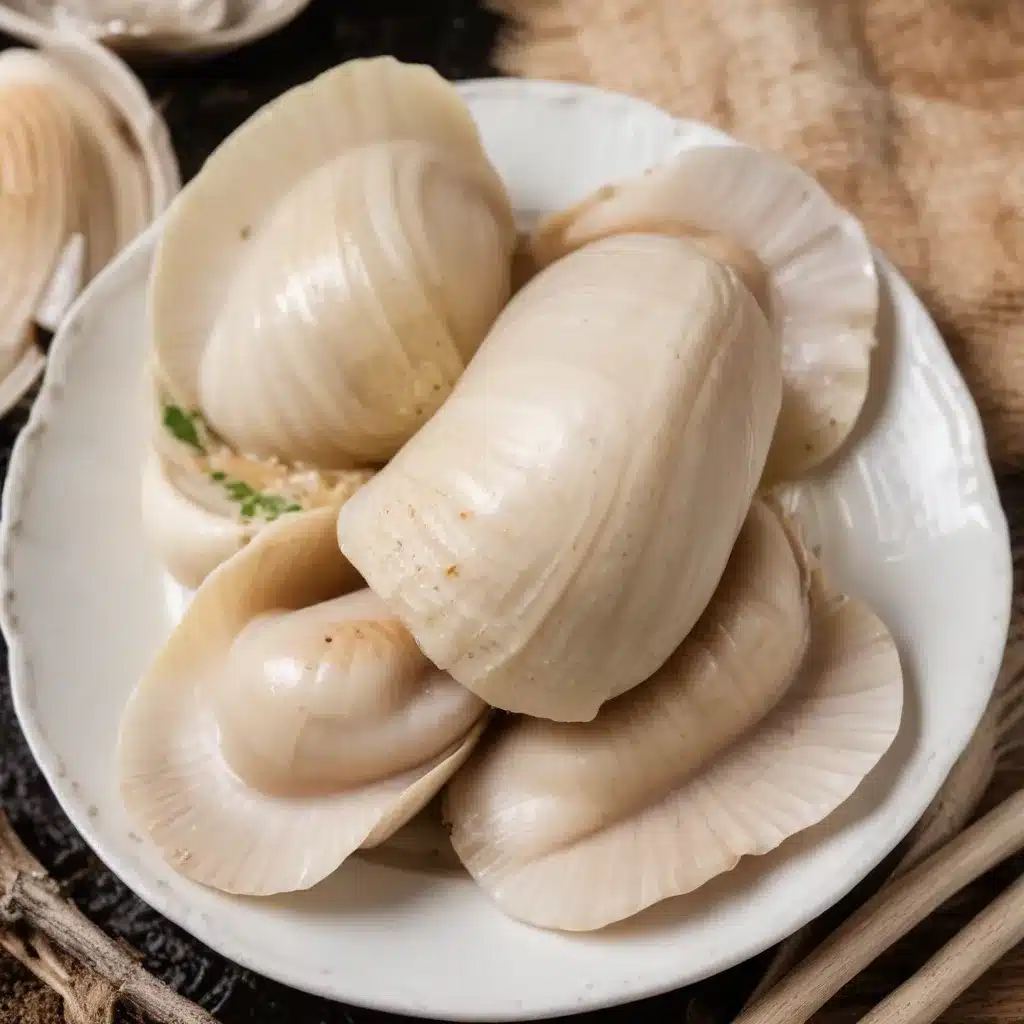
The Wondrous World of Geoduck
Geoduck (pronounced “gooey-duck”) is truly a captivating clam. Known for its impressive size and unique appearance, this giant burrowing clam is a coveted delicacy in many Asian cuisines. With its long siphon that can extend several feet from its shell, the geoduck is certainly a sight to behold. But beyond its striking visual, this remarkable shellfish offers a delicate, sweet flavor and a delightfully tender texture that make it a prized ingredient in the world of seafood.
The natural habitat of the geoduck is primarily found in the Pacific Northwest region, where the cool, nutrient-rich waters provide the ideal environment for this impressive bivalve to thrive. Geoducks make their home by burrowing deep into the sandy or muddy tidal flats, their siphon reaching up to the surface to filter feed on plankton and other microscopic organisms.
Ecologically, the geoduck plays a vital role in maintaining the health and balance of these coastal ecosystems. As filter feeders, they help to improve water quality by removing excess nutrients and particulates. Additionally, the geoduck’s burrows create important habitats for a variety of other marine species, contributing to the overall biodiversity of the region.
Culinary Exploration of Geoduck
When it comes to preparing and cooking geoduck, there are a few key considerations to keep in mind. First and foremost, the siphon, or “neck,” of the geoduck is the most prized and commonly used portion. This part of the clam offers the most tender and flavor-packed meat, making it ideal for a variety of culinary applications.
To prepare geoduck for cooking, begin by carefully cleaning the siphon and removing any grit or sand. Many chefs recommend a quick blanching or par-cooking step to help tenderize the meat and remove any remaining impurities. From there, the geoduck can be enjoyed in a multitude of ways, from raw in sashimi or ceviche-style dishes to cooked in stir-fries, hot pots, or even grilled to perfection.
One of the hallmarks of geoduck is its versatility in the kitchen. The sweet, briny flavor of the clam pairs beautifully with a wide range of ingredients and cooking methods. For a classic Asian-inspired preparation, try thinly slicing the geoduck siphon and serving it raw with a simple soy sauce and wasabi dipping sauce. The delicate texture of the geoduck will shine in this simple yet elegant presentation.
Alternatively, the geoduck can be incorporated into more complex dishes, such as a seafood hot pot or a savory stir-fry. In these applications, the geoduck’s firm yet tender texture holds up well to the other ingredients, creating a harmonious blend of flavors and textures. For a truly indulgent experience, consider grilling or roasting the geoduck, allowing its natural sweetness to caramelize and develop a delightful smoky char.
Nutritional Benefits of Geoduck
Beyond its captivating appearance and delectable flavor, the geoduck also boasts an impressive nutritional profile. As a bivalve mollusk, geoduck is an excellent source of high-quality protein, providing all the essential amino acids the body needs. Additionally, geoduck is rich in important minerals such as zinc, iron, and selenium, all of which play crucial roles in maintaining overall health and well-being.
One of the standout nutritional features of geoduck is its abundance of omega-3 fatty acids, particularly eicosapentaenoic acid (EPA) and docosahexaenoic acid (DHA). These healthy fats have been shown to have a wide range of benefits, from supporting cardiovascular health to promoting cognitive function and reducing inflammation.
For those seeking a nutritious and gluten-free seafood option, geoduck is an ideal choice. As a naturally gluten-free ingredient, geoduck can be seamlessly incorporated into a variety of dishes that cater to dietary restrictions or preferences. Whether preparing a delicate geoduck sashimi plate or crafting a hearty seafood stew, the versatility of this unique clam ensures that everyone can enjoy its delicious and wholesome attributes.
Sustainability and Conservation
The growing popularity of geoduck has, understandably, raised concerns about the sustainability of wild harvesting practices. However, the aquaculture industry has stepped up to provide a viable and eco-friendly solution through the practice of geoduck farming.
Geoduck farming is a carefully managed process that takes place over several years, from the initial cultivation of geoduck larvae in specialized hatcheries to the final harvest of mature clams from their natural tidal habitats. This approach helps to reduce the pressure on wild geoduck populations, allowing them to thrive and maintain their ecological balance.
Importantly, geoduck farming is a highly sustainable practice that upholds the principles of environmental stewardship. The farms are carefully integrated into the natural tidal ecosystems, with no need for chemical feeds or antibiotics. The geoducks themselves act as natural filter feeders, helping to improve water quality and support the overall health of the surrounding marine habitats.
By embracing sustainable geoduck farming, seafood enthusiasts can enjoy the unique flavor and texture of this prized clam while contributing to the long-term preservation of this remarkable species. As we continue to explore the culinary wonders of geoduck, it is crucial that we do so in a way that prioritizes the well-being of the environment and the delicate balance of the ecosystems that sustain these captivating creatures.
Discover the world of sustainable seafood at Fish Tales Cafe, where you’ll find a curated selection of premium geoduck, oysters, clams, and more, all sourced from responsible aquaculture practices. Unlock the secrets of this unique clam and elevate your seafood experience today.

